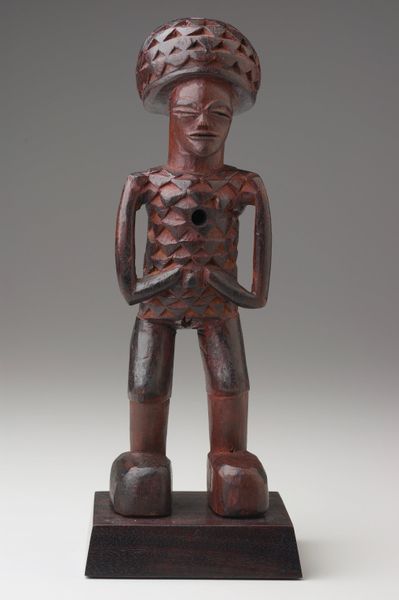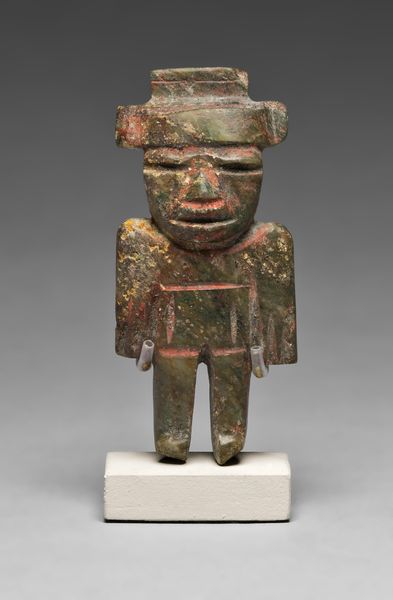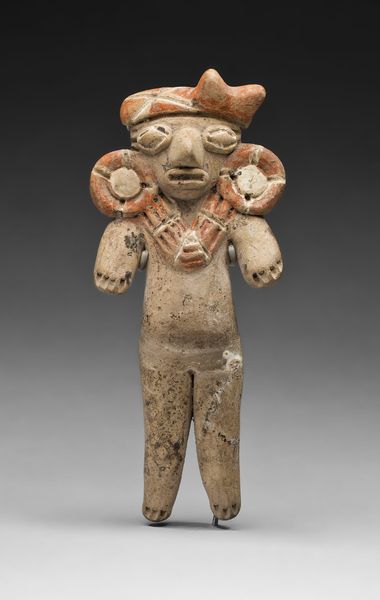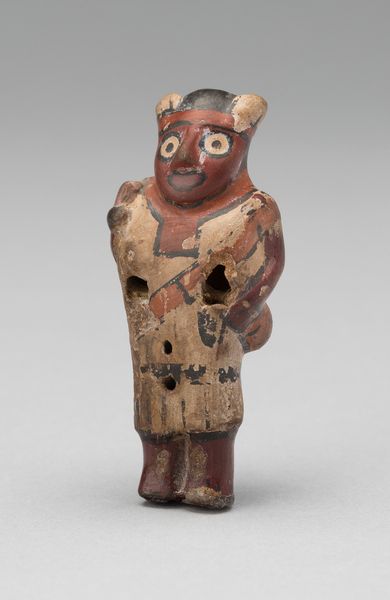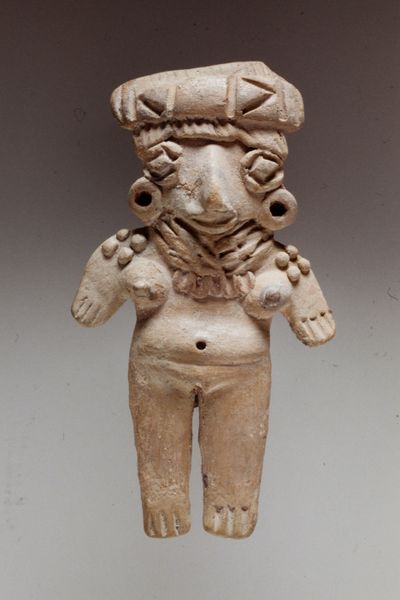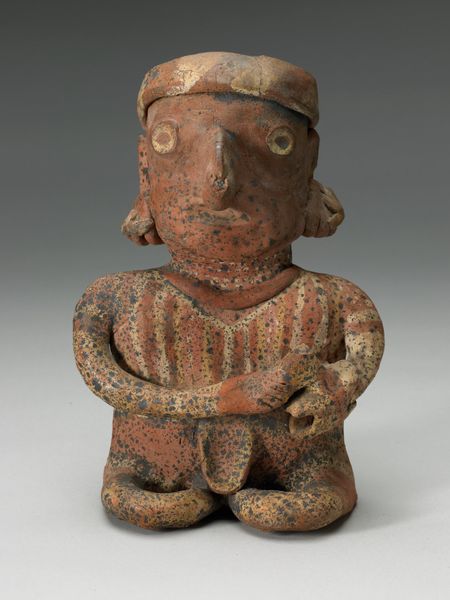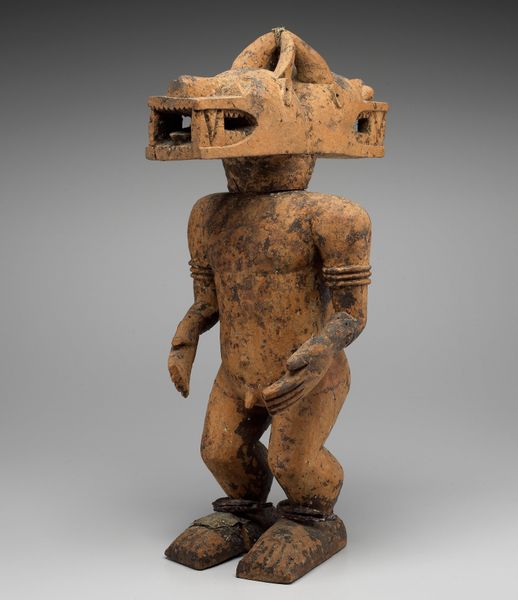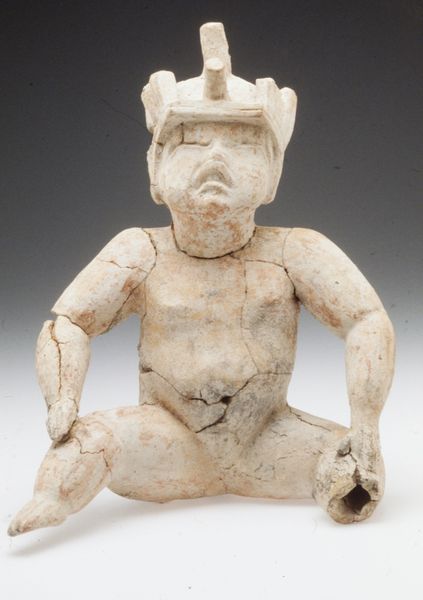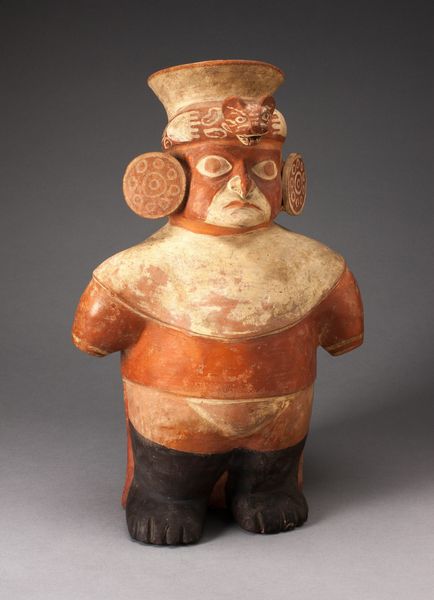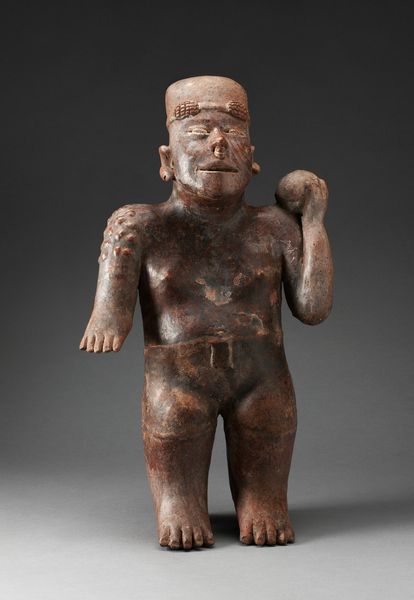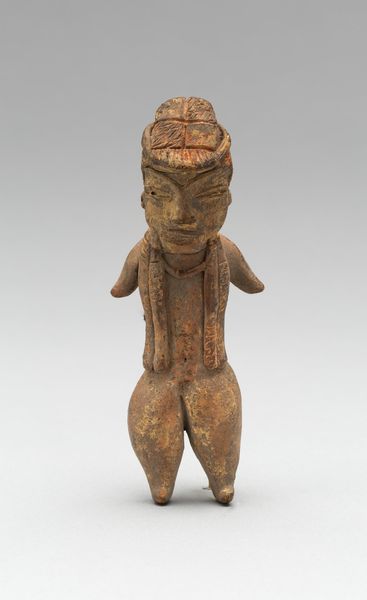
ceramic, earthenware, sculpture
#
sculpture
#
ceramic
#
figuration
#
earthenware
#
sculpture
#
indigenous-americas
Dimensions: 6 5/8 x 3 x 1 in. (16.8 x 7.6 x 2.5 cm)
Copyright: Public Domain
Curator: I’m struck by the stillness and the sense of profound introspection radiating from this figure. It’s incredibly serene, yet there's a hint of melancholy in those closed eyes. Editor: We’re looking at a remarkable piece of earthenware sculpture, dating back to 200-700 CE from Michoacan. Here at the Minneapolis Institute of Art, it’s titled “Standing female figure.” Curator: Michoacan art often reflects a deep connection to the land and to ancestral veneration, doesn't it? Given the figure's adornments—those large, round ear flares painted with crosses, the striations across the headpiece—what might they signify? Editor: That’s precisely the sort of question that archaeologists and art historians grapple with. We see recurring patterns like these throughout Mesoamerican art, sometimes connected with cosmology, or lineage. In Michoacan society, these figures served complex roles. Perhaps she was placed within a tomb, holding status, or representing some deity. The material itself, that humble earth, further embeds the work within its origins. Curator: You know, the figure also exudes a kind of quiet power. Despite its size, its very frontality and balanced stance give it a certain monumental quality. It’s as if it condenses centuries of silent witness. There is a crack on its chest. Did this damage occur during excavation or over time? I’m curious about what that "flaw" may add to the piece's story. Editor: Those kinds of accidental marks from the earth give a figure a feeling of individuality that a fresh one couldn’t have, which certainly connects the piece to a historical narrative and the object's individual timeline. It reminds us of the labor that made this and of the figure's place and treatment. I do like to see such marks when I come across these objects in museums. It humanizes and historicizes. Curator: Ultimately, this piece prompts reflection not just on ancient cultures but also on our connection to the past. What we value, how we remember, and what meanings we project onto objects across vast spans of time. It certainly makes me reflect. Editor: Absolutely, a silent dialogue across centuries rendered in the humblest and most enduring of materials. Earth.
Comments
No comments
Be the first to comment and join the conversation on the ultimate creative platform.
